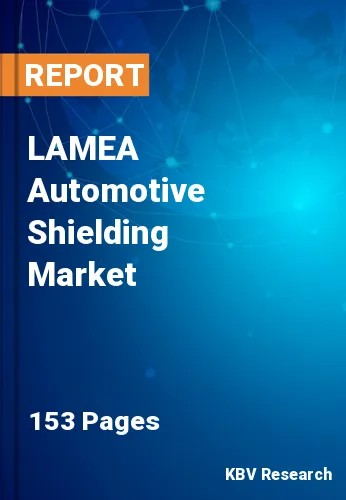The Latin America, Middle East and Africa Automotive Shielding Market would witness market growth of 5.8% CAGR during the forecast period (2023-2030).
Safety-critical systems rely on accurate sensor data to make split-second decisions. Electromagnetic interference from various sources, including other electronic components within the vehicle, external electromagnetic fields, or adjacent electronic systems, can disrupt sensor signals. This shielding acts as a protective barrier, preventing unwanted EMI from affecting the operation of critical safety systems. It is designed to maintain the integrity of electronic signals transmitted between sensors and control units. Shielding materials and configurations are carefully engineered to minimize signal degradation and ensure the reliable transmission of sensor data.
Ensuring the integrity of communication and control signals in charging cables and connectors in EV charging infrastructure is crucial for the safety and efficiency of electric vehicle charging. Modern vehicles' proliferation of electronic control units necessitates effective shielding to prevent crosstalk and interference between different automotive control units. Shielding solutions are employed to design and manufacture these critical components to ensure seamless communication and operation.
Autonomous vehicles rely heavily on electrification and sophisticated connectivity systems. As LAMEA sees an increase in the adoption of electric vehicles (EVs) and connected cars, there will be a greater need for shielding to protect electronic components from electromagnetic interference and radiofrequency interference (RFI). As per the data from the International Trade Administration, the primary aim of the South African Automotive Masterplan (SAAM) 2021-2035 is to increase the nation's standing and global vehicle production ranking significantly. By achieving this target by 2035, South Africa will be responsible for 1.4 million vehicles annually, or 1% of global vehicle production. Thus, the production of new vehicles in LAMEA will increase demand for automotive shielding due to enhanced vehicle sales in the region. Moreover, growing measures for adopting self-driving vehicles in the region will also contribute to increased demand for automotive shielding.
The Brazil market dominated the LAMEA Automotive Shielding Market by Country in 2022 and would continue to be a dominant market till 2030; thereby, achieving a market value of $583.4 million by 2030. The Argentina market is showcasing a CAGR of 6.4% during (2023 - 2030). Additionally, The UAE market would register a CAGR of 5.6% during (2023 - 2030).
Based on Shielding Type, the market is segmented into Heat Shielding, and Electromagnetic Induction shielding. Based on Application, the market is segmented into Electromagnetic Compatibility, Electronic Control Modules, Infotainment Systems, Advanced Driver Assistance Systems, and Others. Based on Vehicle, the market is segmented into Passenger, and Commercial. Based on Material, the market is segmented into Copper, Plastics, Aluminum, Foam, Nickel, Stainless Steel, and Others. Based on countries, the market is segmented into Brazil, Argentina, UAE, Saudi Arabia, South Africa, Nigeria, and Rest of LAMEA.
Free Valuable Insights: The Worldwide Automotive Shielding Market is Projected to reach USD 28.8 Billion by 2030, at a CAGR of 4.4%
The market research report covers the analysis of key stake holders of the market. Key companies profiled in the report include Dana Incorporated, Tenneco, Inc., Henkel AG & Company, KGaA, Morgan Advanced Materials plc, 3M Company, Parker Hannifin Corporation, RTP Company, Inc., Autoneum Holding AG, Tech Etch, Inc. and Marian, Inc.
By Shielding Type
By Application
By Vehicle
By Material
By Country
Our team of dedicated experts can provide you with attractive expansion opportunities for your business.

